





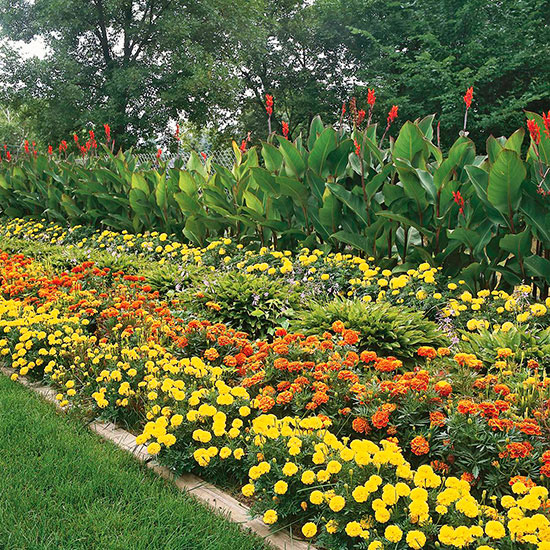
When selecting plants, keep them in scale with their surroundings. For instance, if a bed skirts a 4-foot-tall fence, add plants that will stretch a little above the fence posts. If you select plants that don't even reach the top of the fence, the structure will seem more prominent and may even appear to cage in the plants.
Once you select the tallest plant, stairstep heights down from there. A general rule is to step down the heights by half. So underplant a 6-foot-tall 'Pretoria' canna with a 3-foot-tall orange-flower zinnia. Purple-tone ageratum or a Gomphrena that tops out at 18 inches strikes a pretty pose next to the zinnia. To supersize the planting, place an even taller castor bean or sunflower behind the canna.
If you don't have a structure to influence your plant height selection, select the tallest plant so it is equal to half the width of the planting area. When choosing plants to surround a birdbath or sculpture, pick plants no more than two-thirds the height of the object they will surround.
When you purchase plants at a garden center, try to find large plant specimens to stage side-by-side comparisons. You can still purchase smaller plants to save money, but you'll be able to see their scale in relationship to one another.
If you goof on scale and pair a tall banana with a creeping verbena, the look may be more cartoonish than attractive. Luckily, it's easily remedied. You can always pull and replant or add midsize plants between the two.
Less-forgiving scale mistakes occur when choosing an arbor or sculpture. If you err on the too-big side, you'll have to live with an object that looks like it escaped from a giant's garden, and it will overshadow your plantings. If you select an item that's too small, plantings will overwhelm it, and it will be hard to see.
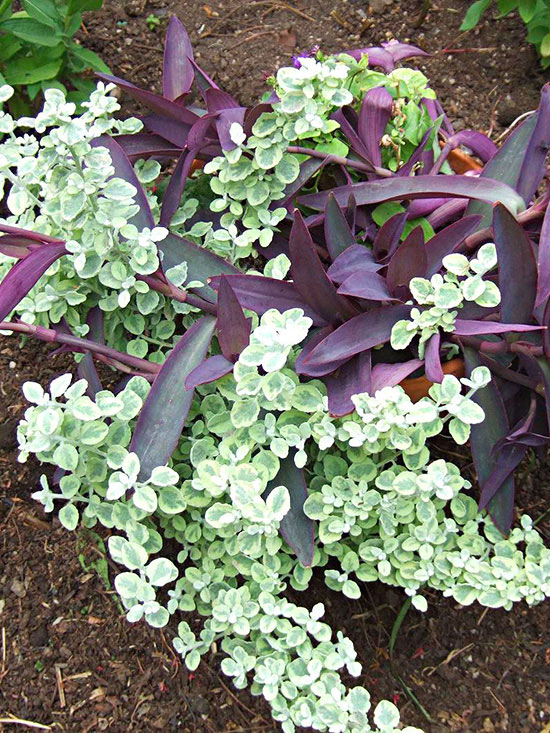
When you need to cover ground, consider trailing plants. While they look great cascading out of a container, they apply that same growth habit to create a colorful carpet in planting beds. Good choices include spreading petunia (such as Wave), Bidens, creeping zinnia, and purple heart.
While size is relative, in general you can count on these quick-color annuals and tender perennials to fill holes in a planting design for tall, medium, and short plants.
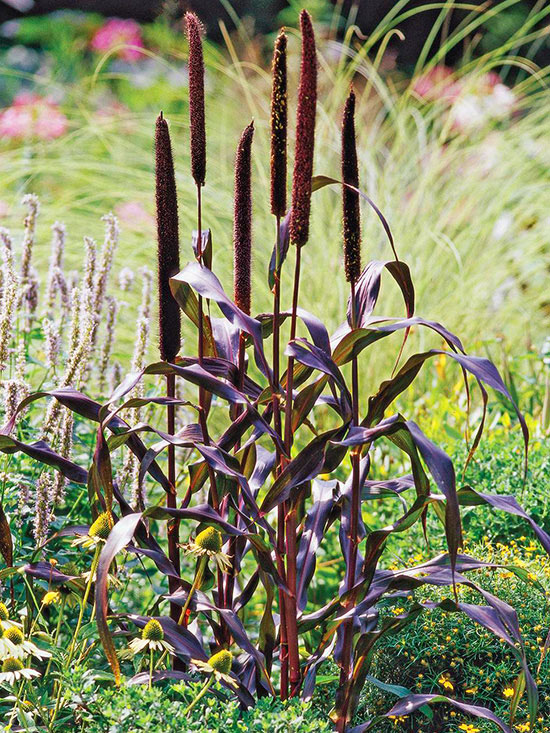
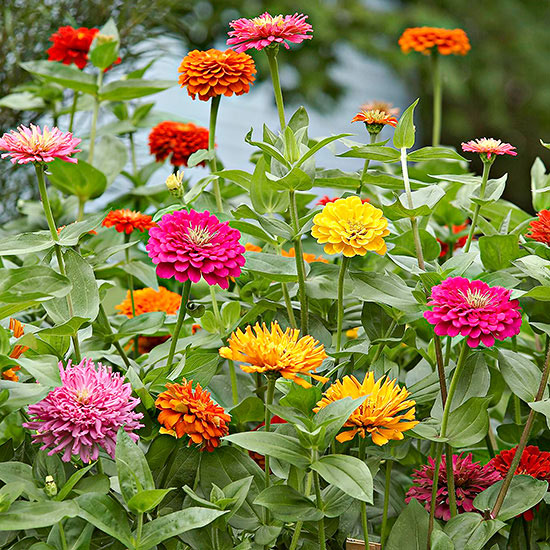
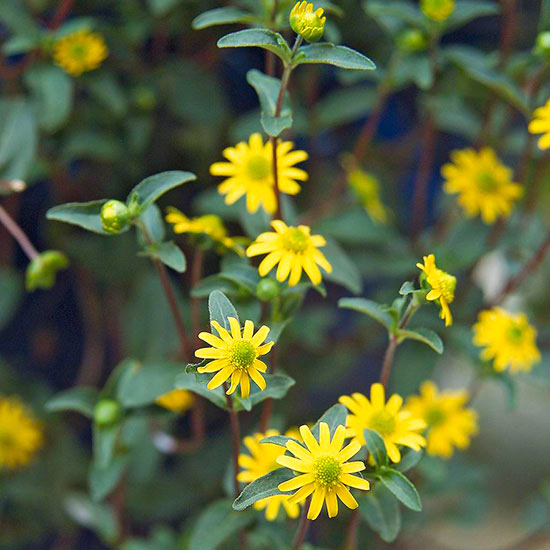
How to Grow Watermelons: How to Plant Watermelons
How To Maintain An Indoor Plant
How To Create An Indoor Garden
How to Design and Plant a Container Herb Garden
How to Take Care of a Garden Plant Indoors
How to Prepare to Plant Seeds in Your Garden
Orange Flowering Plants: How To Design An Orange Garden Scheme
Copyright © www.100flowers.win Botanic Garden All Rights Reserved